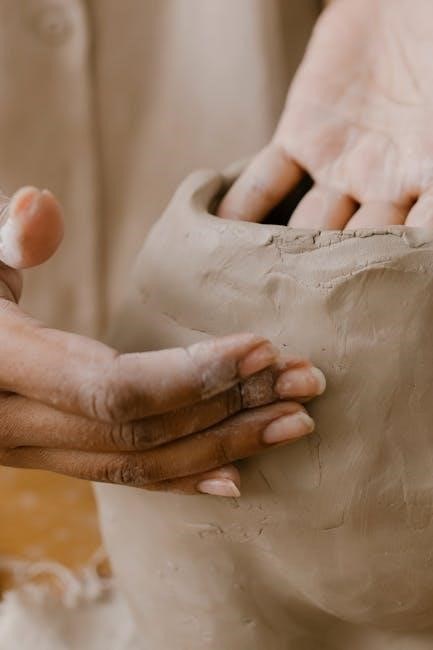Driving a Manual Wheelchair⁚ Essential Techniques
Mastering manual wheelchair propulsion involves proper posture, hand placement, and efficient pushing techniques. Consistent, controlled movements, pushing both wheels simultaneously, are key for smooth mobility. Understanding how to navigate varied terrains, from smooth surfaces to inclines and obstacles, is crucial for safe and independent travel. Proper technique minimizes strain and maximizes efficiency.
Proper Posture and Hand Placement
Maintaining correct posture while operating a manual wheelchair is paramount for preventing injuries and maximizing efficiency. Sit upright with your back straight, engaging your core muscles for stability. Avoid hunching or slouching, which can strain your back and shoulders. Your feet should be flat on the footrests, providing a stable base. Proper hand placement on the push rims is equally crucial. Position your thumbs on top of the rims, allowing for controlled steering and preventing hand slippage. Your grip should be firm but not tense, distributing your weight evenly across your hands and forearms. Avoid gripping too tightly, which can lead to fatigue and discomfort. Experiment with different hand positions to find what is most comfortable and efficient for you. Regular breaks can help prevent fatigue and potential injuries, especially during extended periods of use.
Efficient Propulsion Techniques
Efficient propulsion in a manual wheelchair relies on a combination of proper technique and consistent practice. Begin by using a smooth, controlled pushing motion, avoiding jerky movements that can strain your muscles and reduce efficiency. Push from your legs and core, not just your arms, engaging your entire body for a more powerful and less tiring propulsion. Maintain a consistent rhythm, finding a pace that suits your strength and endurance. Avoid pushing too hard or too fast, especially when starting out, to prevent fatigue and potential injuries. Focus on a steady, even pressure on both push rims, ensuring simultaneous movement of both wheels for balanced and controlled movement. Regular practice will help you develop a natural rhythm and improve your overall efficiency and stamina. Remember that proper technique minimizes strain and maximizes the distance covered with each push.
Navigating Different Terrains
Successfully navigating diverse terrains with a manual wheelchair requires adaptability and skill. Smooth, level surfaces present the least challenge, allowing for consistent, efficient propulsion. However, inclines demand a modified approach; increase your pushing force and maintain a steady pace. Declines require cautious control; reduce your speed and use controlled braking techniques to avoid uncontrolled acceleration. Uneven surfaces, such as grass or gravel, necessitate shorter, more controlled pushes to maintain stability and avoid jarring movements; Obstacles, like curbs, require strategic maneuvering; employing techniques like the “pop-up” method (a forceful pull on the push rims) can assist in mounting curbs. Always assess the terrain before proceeding, adjusting your technique accordingly to ensure a safe and comfortable journey. Practice navigating varied surfaces to build confidence and proficiency.
Wheelchair Maintenance and Adjustments
Regular inspection and cleaning are vital for optimal wheelchair function and longevity. Addressing common issues promptly prevents further damage and ensures safe operation. Adjusting components, such as seat height and wheel tension, optimizes comfort and efficiency.
Regular Inspection and Cleaning
Regular maintenance is crucial for the smooth operation and longevity of your manual wheelchair. Begin by visually inspecting the chair’s frame for any signs of cracks, bends, or damage. Check the wheels, ensuring that the tires are properly inflated and show no signs of wear or punctures. Examine the spokes for any looseness or damage. Pay close attention to the axles, making sure they are securely fastened and not showing any signs of wear. Clean the wheelchair regularly using a damp cloth and mild detergent. This will remove dirt and grime that can accumulate over time and potentially cause damage or rust. Remember to dry the wheelchair thoroughly after cleaning to prevent rust formation. For more thorough cleaning, consider using a specialized wheelchair cleaning solution. Lubricate moving parts like wheel bearings periodically to ensure smooth operation and prevent premature wear and tear. By following these simple steps, you can extend the life of your manual wheelchair and prevent potential problems.
Troubleshooting Common Issues
Addressing common wheelchair problems promptly ensures safe and efficient mobility. If your wheelchair feels difficult to push, check tire pressure; underinflation significantly increases effort. Examine the wheels for any damage or obstructions. Squeaking noises often indicate the need for lubrication of moving parts, such as wheel bearings or axle components. If the wheelchair veers to one side, check for uneven tire wear or potential frame misalignment. This might require professional attention. Difficulty with turning could be due to tight caster wheels or issues with the caster mechanism itself. Regularly inspect all fasteners to ensure they remain tightened; loose bolts can compromise structural integrity and safety. Persistent problems that you cannot resolve yourself should prompt consultation with a wheelchair technician or repair specialist. They possess the expertise and tools to diagnose and fix more complex issues, ensuring your wheelchair continues to function optimally.
Adjusting Wheelchair Components
Regular adjustments optimize comfort and performance. Seat height significantly impacts propulsion efficiency and posture; adjust it to allow for proper foot placement and prevent strain. Armrest height should allow for comfortable arm support without restricting movement or causing shoulder discomfort. Backrest angle can be adjusted for better postural support and reduced fatigue during prolonged use; experiment to find the most comfortable position. Footrest height and angle are crucial for proper leg positioning and comfort, reducing pressure points and improving overall comfort. Wheelchair components are often equipped with mechanisms for making these adjustments; consult your wheelchair’s manual for specific instructions. If you struggle with adjustments, or if your wheelchair requires more significant modifications, consider consulting an occupational therapist or wheelchair specialist. They can provide personalized guidance and ensure your wheelchair is perfectly tailored to your individual needs and physical capabilities.
Advanced Maneuvering Techniques
Mastering three-point turns and navigating obstacles like curbs requires practice and skill. Safe wheelchair transportation, whether in a vehicle or by other means, is essential for independent living. These techniques improve mobility and confidence.
Turning and Three-Point Turns
Efficient turning is fundamental to manual wheelchair navigation. Simple turns involve smoothly shifting your weight and using controlled pushes on the handrims to change direction. For tighter spaces, the three-point turn is invaluable. This technique uses a pivot point, often a wall or doorway, to execute a 180-degree turn. Begin by approaching the pivot point, then make a forward turn to position the chair. Next, reverse smoothly using controlled backward pushes on the handrims. Practice is essential to master the balance and coordination needed for smooth, controlled three-point turns. The ability to execute these maneuvers efficiently enhances independence and mobility in various environments. Remember to assess your surroundings before attempting any turn to ensure safety and avoid collisions. Consider the space available and potential obstacles, such as furniture or other people, before commencing the maneuver. Smooth execution minimizes physical strain and promotes safe maneuvering.
Negotiating Obstacles and Curbs
Obstacles and curbs present common challenges for manual wheelchair users. Approaching obstacles, assess the height and type of obstruction. Small bumps can often be overcome with a smooth, continuous push. For larger obstacles, consider a slightly angled approach or a three-point turn to maneuver around them. Curbs require a different technique. A “pop-up” method, involving a quick, forceful pull on the push rims just before the curb, can help lift the front wheels. For higher curbs, a ramp or assistance may be necessary. Always maintain a steady posture and controlled movements. Remember to check your surroundings for additional hazards or obstacles before and during the maneuver to avoid accidents. Proper technique minimizes strain on your body and ensures smoother navigation. Practice navigating various obstacles and curbs in a safe environment before tackling challenging situations in unfamiliar surroundings. Knowing how to effectively manage these challenges promotes safety and increased independence.
Safe Transportation of the Wheelchair
Safe transportation of a manual wheelchair is crucial for maintaining its integrity and ensuring personal safety. Several methods exist, each with its own considerations. Vehicle transport options range from manual lifts and ramps to more advanced robotic arms and car toppers. When using a ramp, ensure it’s properly secured and at a safe incline. For manual lifts, proper lifting techniques are essential to prevent injury. Consider the wheelchair’s weight and your physical capabilities. If using public transportation, check accessibility features beforehand. Folding the wheelchair correctly is important for storage and transport; familiarize yourself with your model’s folding mechanism. Always secure the wheelchair during transit to prevent damage or accidental movement. Remember to account for the wheelchair’s size and weight when planning trips, and consider any potential accessibility challenges at your destination. Prioritize safety throughout the transportation process.
Considerations for Wheelchair Users
Wheelchair use demands upper body strength and endurance; injury prevention strategies, such as proper posture and regular breaks, are vital. Adaptive techniques, like alternative propulsion methods, can enhance mobility and participation in community activities. Prioritizing accessible transportation is crucial for independent living.
Physical Demands and Injury Prevention
Operating a manual wheelchair places significant physical demands on the upper body, particularly the shoulders, arms, and hands. Repetitive pushing motions can lead to overuse injuries like tendinitis, bursitis, and rotator cuff problems. Maintaining proper posture—sitting upright with a neutral spine—reduces strain. Taking regular breaks during prolonged use is essential to prevent fatigue and injury. Strength training exercises that target the upper body can build endurance and reduce the risk of injury. Learning efficient propulsion techniques minimizes strain and maximizes mobility. Regular stretching before and after wheelchair use improves flexibility and reduces muscle soreness. If pain or discomfort occurs, consult a physical therapist or healthcare professional to address potential issues and develop a tailored exercise program or injury management plan. Proper wheelchair setup, including seat height and back support, also contributes to injury prevention. Ignoring physical demands can result in chronic pain and limited mobility.
Adaptive Driving Techniques
For individuals with limited upper body strength or dexterity, adaptive driving techniques can significantly improve mobility and independence. These techniques may involve modifications to the wheelchair itself, such as different handrim sizes or specialized grips to enhance control and reduce strain. Users might employ alternative propulsion methods, such as using their legs or a combination of upper and lower body movements. Adaptive equipment like specialized hand cycles or power assist units can augment the user’s strength and endurance. Learning to efficiently navigate diverse terrains and obstacles requires developing specific strategies for maneuvering. This may include adapting speed and momentum to suit the surface and using different turning techniques for tight spaces. Proper training and assessment by occupational therapists are crucial to personalize techniques and optimize safety. Adaptive techniques may also involve the use of assistive technology, such as specialized controls for operating vehicles while remaining in the wheelchair. The goal is to find a balance between maintaining independence and minimizing physical exertion.
Community Mobility and Participation
Community mobility and active participation are significantly impacted by the ability to effectively and safely use a manual wheelchair. Factors influencing this include accessible infrastructure, such as ramps, curb cuts, and wide doorways. Public transportation accessibility, including wheelchair-accessible buses and trains, plays a pivotal role. The user’s physical capabilities and the terrain also significantly affect their ability to navigate their environment. Social factors such as inclusive attitudes and societal support systems also affect community integration. Support networks and adaptive equipment, like specialized wheelchair attachments or power assist units, can enhance mobility and participation. Moreover, training programs focused on safe and efficient wheelchair techniques, along with knowledge of community resources, are essential. These programs can help users overcome environmental barriers and increase their independence in the community. Ultimately, fostering inclusive environments that support and accommodate wheelchair users is crucial for their full participation in community life.

